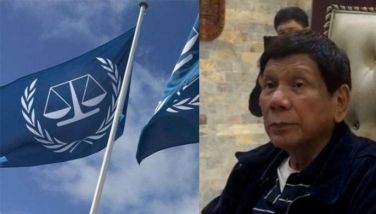Discovery and colonization
Before the month of March moves out of our lives and is replaced by April, let me remind our people that it was in March that an event took place that completely changed our lives. To this day, we have never really shaken off the effects of this development even as we strive to create a truly free and independent nation with less inequalities in society and a more perfect justice system for all.
As our history books put it, more than 500 years ago we were a happy, carefree people living in peaceful coexistence with our neighbors, minding our own business and enjoying an idyllic life when events in a faraway continent called Europe rudely impacted on our lives. A rebirth was taking place in that continent and it was characterized not only by a revolution in ideas but also by an expansion of trade and commerce that would in turn result in a drastic overhauling of world geography and national boundaries.
Three men were mainly responsible for some of the major developments of this era. First was Bartholomew Dias, a Portuguese who, in 1487, first rounded the Cape of Good Hope at the southern tip of Africa, opening a maritime route to India and the Spice Islands (Moluccas), making them the brightest jewels in the crown of Portugal. Second was Christopher Columbus, an Italian sea captain who discovered the Americas in 1492, believing it was the eastern coast of Asia. And third was Ferdinand Magellan.
Fernando de Magallanes was a navigator born of minor nobility in Sabrosa, an island province of Portugal. He was the elder of two brothers and had three older sisters and for a while, served as a page at the court of King Manuel I of Portugal. At the age of the 25, he joined the Portuguese naval forces and served with distinction in India and the East Indies, returning to Lisbon as a captain after seven years. His long stay abroad, however, created a number of intrigues against him that damaged his standing at the royal court.
So Fernando left Portugal and went to Spain, where he presented to the Spanish royal court his idea of reaching the Spice Islands not by going eastward but by sailing west. He found a receptive monarch in Charles I, later known as King Charles V, and Magellan became a Spanish citizen. In March 1518, a contract was entered into by King Charles and Magellan, providing for the launching of an expedition to the east, based on the latter’s concept.
The contract, which was called a Capitulacion, had a number of interesting provisions: For his services, Magellan would receive 20 percent of all profits from the first voyage, after expenses were paid. He was given the title of Adelantado, or Governor, the same to be hereditary and to remain with his heirs forever so long as they remained nationals and married Spanish women.
King Charles also undertook to equip five ships with paid crews of 234 persons, provisions for two years, along with artillery and other needed gear. In another royal order, he conferred on Magellan the power of summary execution at sea and on land.
In the meantime, Magellan married Beatriz Barbosa, daughter of a wealthy Spanish family who bore him a son, Rodrigo.
Preparations were now in full swing and in September 1519, he sailed from San Lucar de Barrameda, a seaport next to Seville, at the head of a flotilla of five ships – the Trinidad, which served as his flagship; the Concepcion, the San Antonio, Victoria and the Santiago.
His first stop was the Canary Islands from where he proceeded to the eastern coast of South America, and settled down for the winter in Patagonia, a region in modern day Argentina and Chile. Here a mutiny broke out, led by his captains. He was successful in quelling this outbreak but at the cost of having to execute one of the coup leaders, Gaspar Quesada, captain of the Concepcion.
In August, he set sail again but this time with only three ships as the Santiago got shipwrecked while the San Antonio deserted the group and returned to Seville. He found the entrance to a tortuous passage that took five and a half weeks to navigate and in November, reached the Pacific Ocean. He named the passage, “Straits of All Saints.” It now bears his name as the Straits of Magellan.
For 98 days, they sailed across unknown waters beset by sickness and starvation. In early March 1521 they arrived at the Marianas Islands, and on March 16, 1521, according to Antonio Pigafetta, an Italian chronicler who accompanied the expedition, or March 17, 1521, according to latter day historians who took into account the international dateline, “we came upon a high land at a distance of 300 leagues from Ladroni – an island named Zamal (Samar). The following day, the Captain General desired to land on another island to the right of Zamal, called Homonhon.” Here the first Europeans set foot on Philippine soil. A later expedition under Ruy Lopez de Villalobos re-named the place Islas Las Filipinas in honor of the Spanish Crown Prince Felipe, who later became Phillip II of Spain.
Magellan’s 1519 expedition changed the world forever. Historian Lawrence Bergreen described his journey as “the greatest sea voyage ever undertaken, and the most significant.” But for us, Magellan’s expedition meant the beginning of more than 300 years as a colony of Spain followed by another 50 years under the United States. Today we remain a collection of tribes unable to unite for the common good on many issues and very much dependent on old friends and even former adversaries.
- Latest
- Trending




























